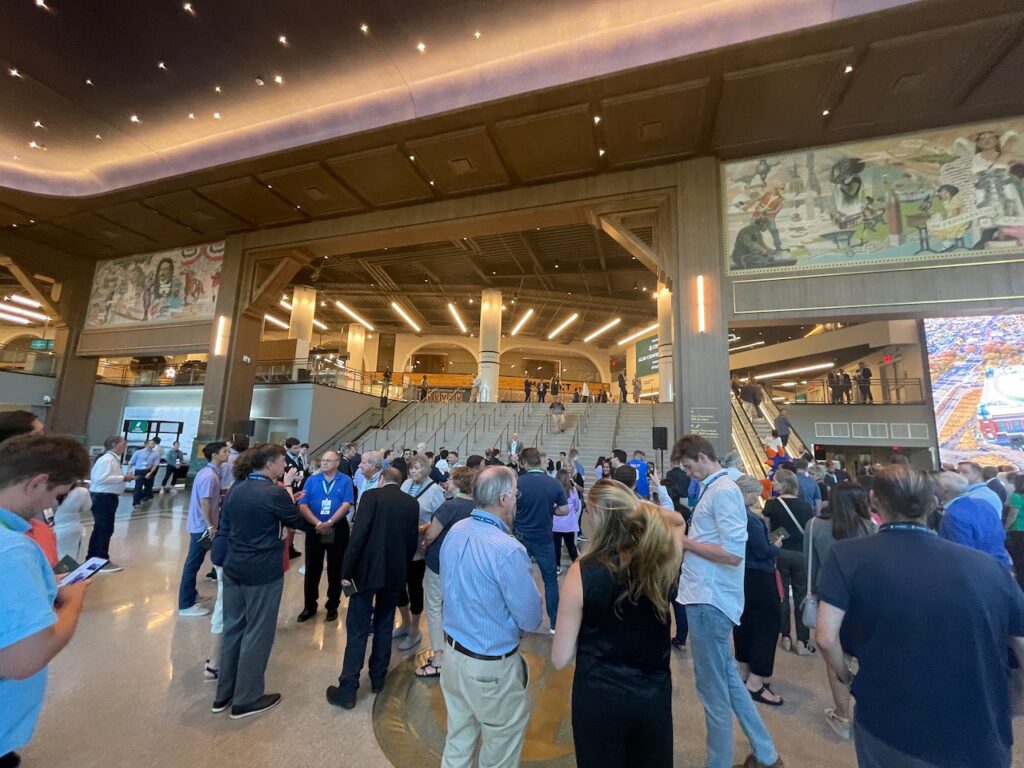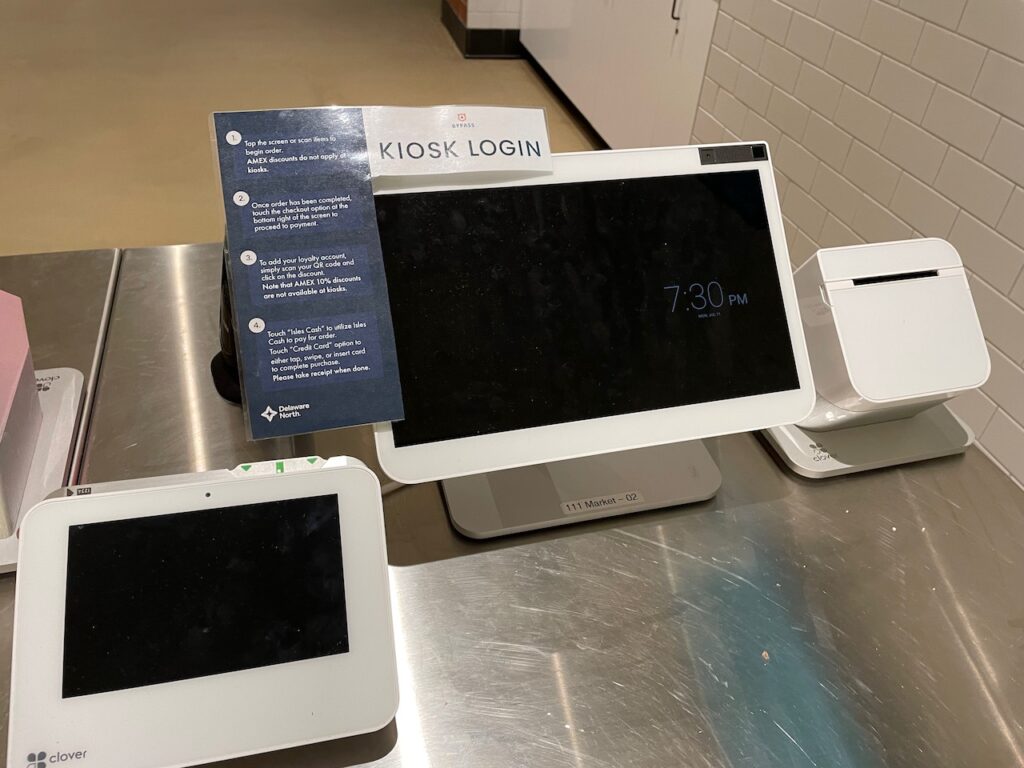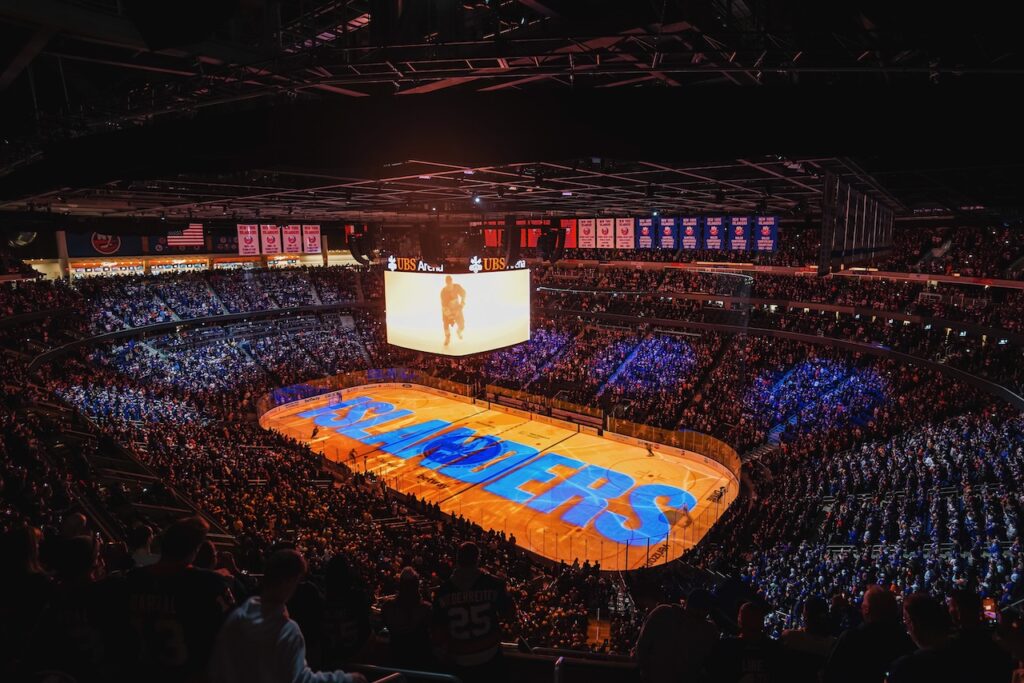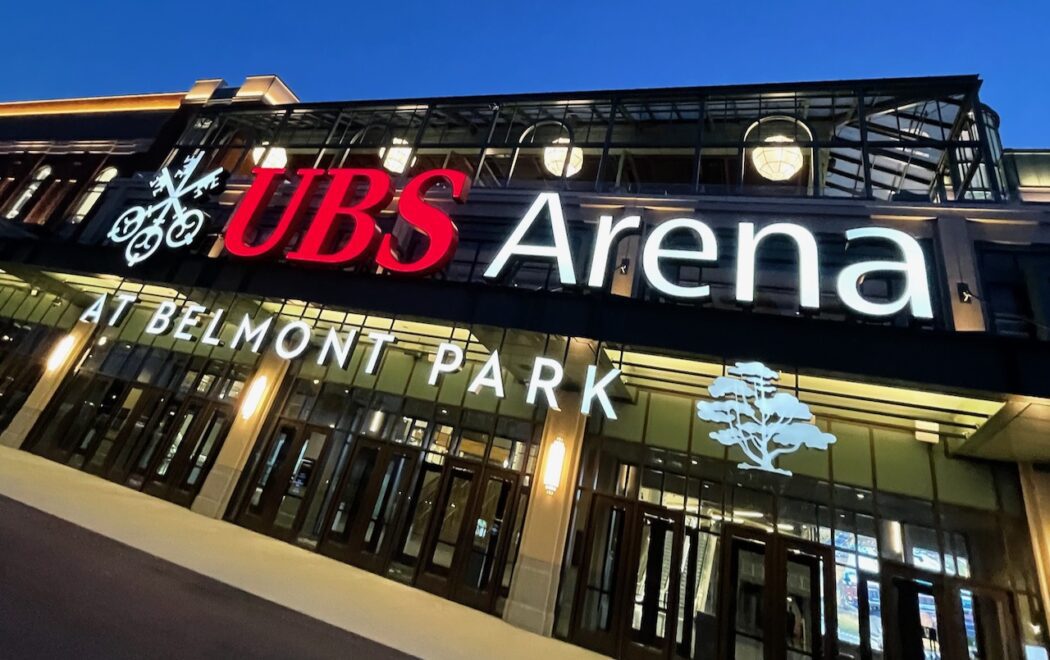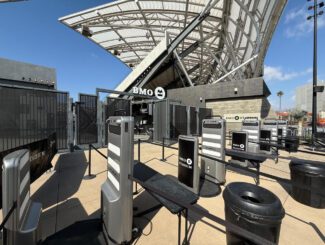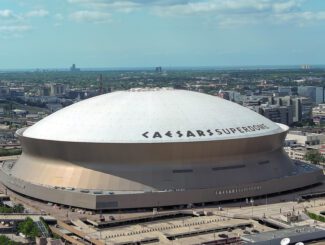If you’re a New York Islanders fan, there is no need to revisit the pain you suffered in recent years when the team struggled to find a reliable, viable home. Not with the opening last year of UBS Arena, a comfortable, tech-filled home for hockey and events that should serve Long Island residents well into the future.
Sitting snugly behind the historic Belmont Park racetrack in Elmont, N.Y., in Nassau County but just to the east of the border of Queens, the new $1.5 billion project built by the Islanders, Oak View Group and Sterling Equities looks modest from the outside, with its blocky red-brick facade.
Inside the doors the building reveals itself to be a gem, with wide-open architectural features that suggest an old-style railroad station, with classic designs. But the building is also definitely a venue for the future, filled with top-level wireless connectivity, leading-edge concessions technology and other features all designed to use technology as much as possible to improve the fan experience. Wide concourses and club spaces and higher-end architectural finishes complete the comfortable feeling of a “new home” that Islanders fans and Long Island eventgoers can feel proud of.
Stadium Tech Report got to visit UBS Arena in early July, during the ALSD trade show and conference in New York City. Our “tech tour” of UBS Arena spotlighted some of the innovations deployed throughtout the venue by OVG, the Islanders and technology partners Verizon, Cisco, JMA, Amazon, Clover, Triple Play, and Daktronics.
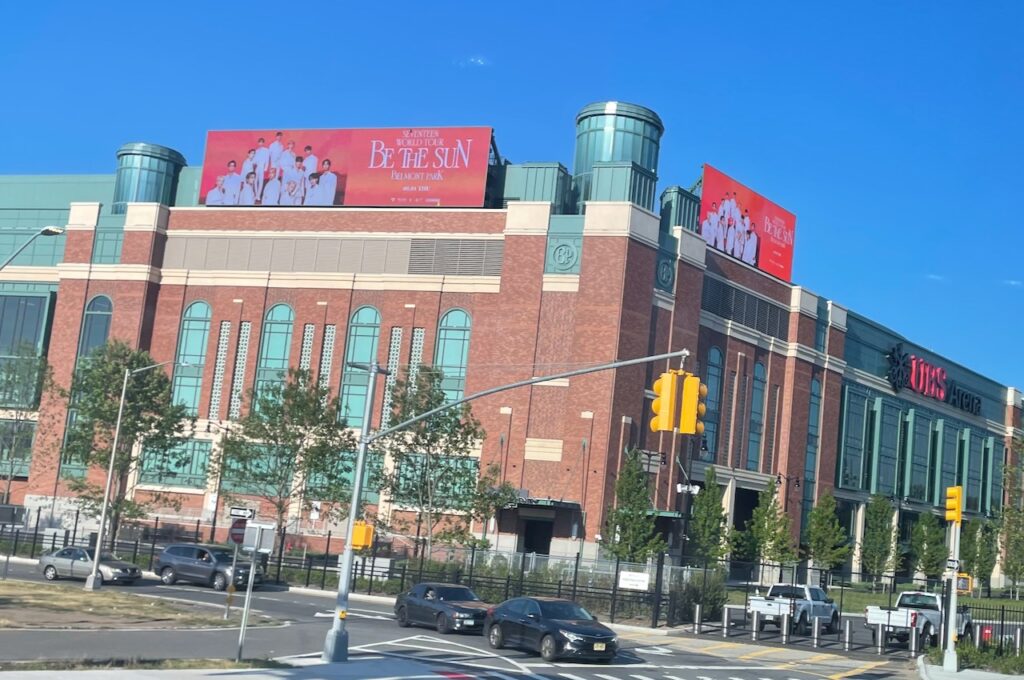
Though our tour was taken in an empty venue, we were still able to witness and test some impressive baseline wireless connectivity speeds, view the video assets throughout the building and get a live view of one of the newest things to hit the stadium concessions space, Amazon’s Just Walk Out technology. Short of seeing them perform in front of a full house, it’s easy to see that the sum of the parts of UBS Arena could add up to a first-class fan experience.
“We have a very damaged fan base, one that came from an arena that was definitely not the stadium of the future,” said Ethan Brown, senior vice president, marketing and community relations for UBS Arena. “But last year when our season ticket holders walked in for the first time, some of them were crying. They could not believe this was all for them.”
Building a base of connectivity
Editor’s note: This profile is from our Summer 2022 Stadium Tech Report issue, which also has profiles of checkout-free concessions and a report on IoT connectivity in stadium restrooms. Download a PDF of the full report!
The experience really does hit you the moment you enter via one of the many side-by-side doorways at the arena’s main entry. Once inside, the soaring rooftop space of the “Great Hall” (with its star-like ceiling lighting) and the stunning clarity of a large three-sided videoboard immediately tell you that this is not just a stadium but a gathering place with style, with the feel of a Grand Central Station from years before.
And function follows the form, as the wide, open entry area looks like it allows for easy flow of fans, with multiple staircase, escalator and other pathways to the different seating sections inside.
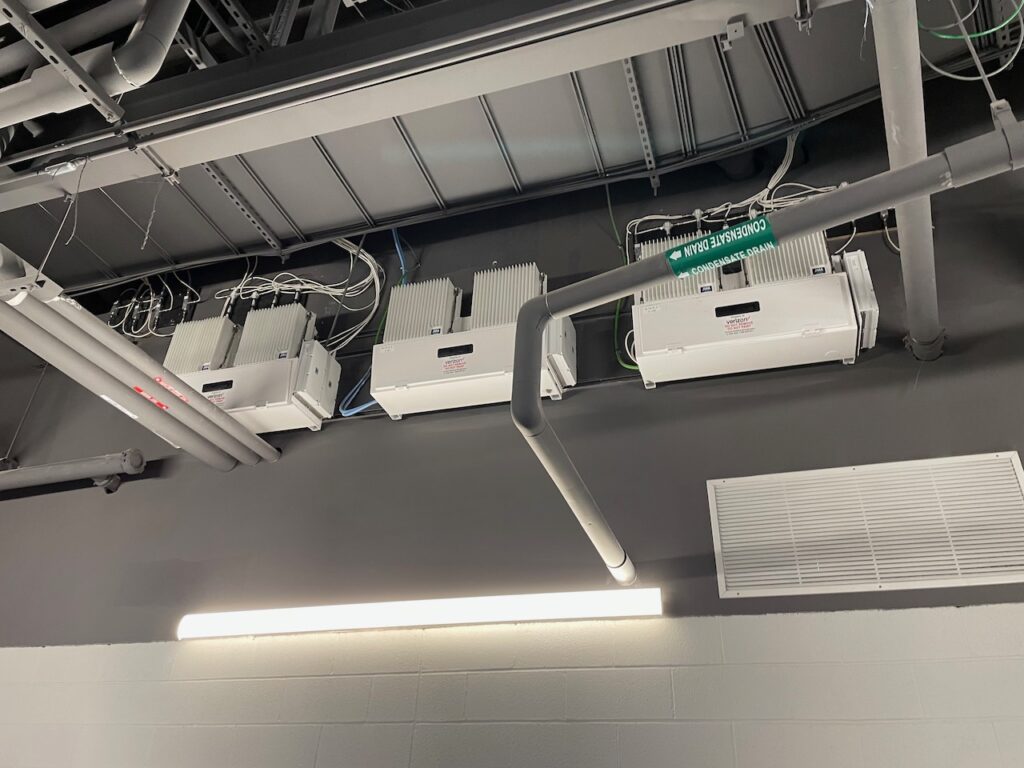
“When you walk in [to the Great Hall], you get an immediate sense of the majesty,” Brown said. “It’s also relatively seamless to get fans going in the right direction.”
If there is one thing necessary to make the fan experience seamless in venues these days, it’s high-quality wireless connectivity. With so much of today’s in-game activity reliant on connectivity, both for fans and back of house operations, it’s perhaps no surprise that the wireless networks at UBS Arena are at the top levels for a venue its size (17,255 capacity for hockey, approximately 19,000 for concerts). Both the Wi-Fi network and the in-house cellular networks were deployed by Verizon, using Cisco gear for Wi-Fi and JMA Wireless equipment for cellular.
For the main seating bowl, both Wi-Fi and cellular DAS antennas are mounted mostly under seat; according to UBS Arena IT staff, the Wi-Fi network has “almost” 1,000 APs installed throughout the building. And again while we were there in a mostly empty building, we did get Wi-Fi speedtests of 169 Mbps on the download and 182 Mbps on the upload in a lounge space, and a 160 Mbps / 188 mark in one of the premium club spaces just off the main concourse level. A cellular-only speedtest on our Verizon phone in the same area hit 97.9 Mbps / 54.0 Mbps.
According to the UBS Arena IT staff leading our tour, the venue recently installed 12 Cisco Catalyst 9104 Stadium Antennas, also known as the “Marlin” antenna by Wi-Fi insiders, in its overhead ceiling structure. According to the IT staff at UBS Arena the 9104s, which were designed to support much greater distances between antenna and client, are a big upgrade for the venue’s Wi-Fi coverage of the stadium floor for concerts and other non-hockey events. We also spotted a couple of MatSing Lens Antennas in the upper infrastructure, whose similar longer-throw capabilities no doubt assist in cellular coverage for the hard-to-reach seats near the playing surface or for floor seats.
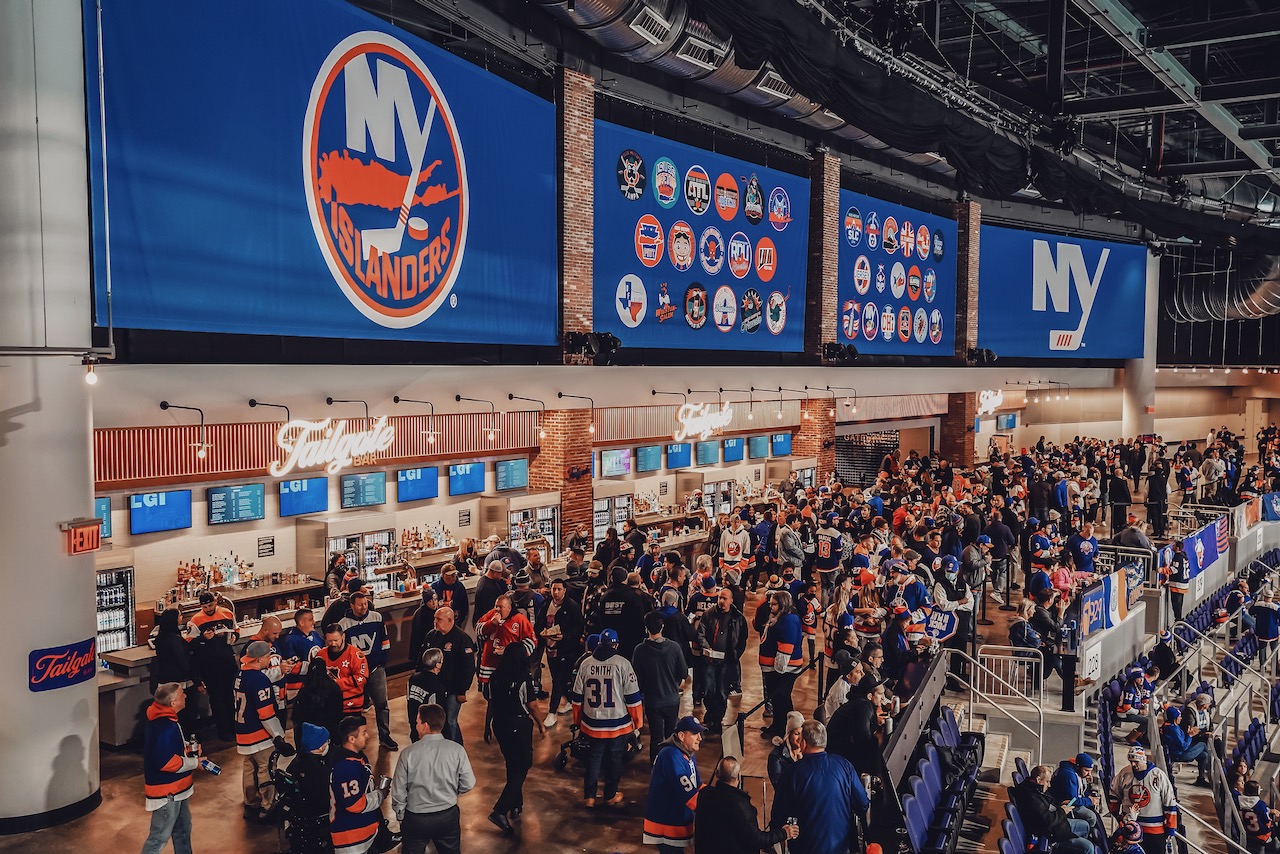
Faster concessions via walk-out and self-checkout technology
If there is one thing that differentiates hockey fans (and maybe soccer fans as well) from other sports, it’s that hockey fans typically don’t want to miss any of the on-ice action, which has fewer built-in stoppages than sports like football, basketball and baseball. To better serve its fans, UBS Arena has put an emphasis on leading-edge concessions technology that aims to significantly reduce the amount of time spent in line purchasing food and beverages.
“We’ve really stepped it up on the food offerings,” Brown said. “It’s a completely new experience.”
The most interesting of those is the presence of two “Just Walk Out” stores powered by technology from Amazon. Customers at Just Walk Out stores can simply scan a credit card at the entry gate, enter the store, select the items they want, and leave, with billing taking place online. Such “checkout-free” installations, which are also available at other venues using technology from startups Zippin and Ai-Fi, are quickly gaining popularity among sports fans for their ability to facilitate concessions purchases that take seconds, as opposed to minutes, to complete.
The Amazon stores at UBS Arena, called “On the Fly” in a nod to the way hockey teams make replacements by jumping over the boards instead of waiting for a stoppage in play came online in April of this year, and as such Brown said the venue didn’t have a lot of metrics yet on use. Like other implementations of the checkout-free stores, he said fans need a little time to understand the systems — but after trying it once, most come back quickly as they learn the game-changing transaction speed the stores can support.
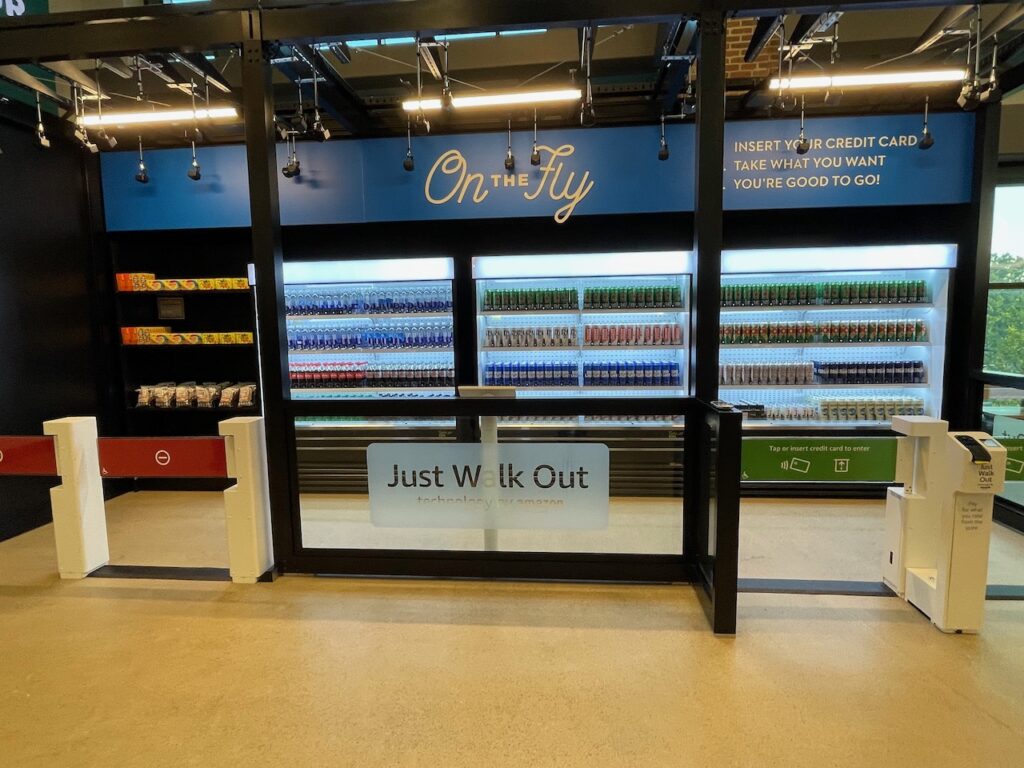
At other concession stands we saw around the arena, kiosk-ordering and self-checkout systems from Clover are in place, another technology rapidly gaining favor in stadiums. With post-Covid hospitality staffing a challenge at venues worldwide, many stadiums like UBS Arena are finding that a bank of self-checkout systems can not only reduce staffing needs but can also help speed up the overall purchasing process, a win-win for venue and fans.
UBS Arena is also leaning in a direction gaining favor in many stadiums, in offering local-favorite food items in specialty stands, as well as new national brands like Shaq’s Big Chicken.
“We’ve really stepped it up on the food offerings,” Brown said. “It’s a completely new experience.”
Digital signage plays a big role
As befits the overall scheme, the large videoboards inside UBS Arena from Daktronics are stunning in size and clarity, with the main centerhung board featuring 5.9 millimeter pixel spacing for extreme clarity. There is also a very large, three-sided screen just inside the front door (“We call it the ‘Z-screen,’ ” Brown said) that provides a flashy entry welcome as guests enter the arena.
“The idea was to surprise and delight at as many touchpoints as we could,” said Brown, who noted that the issue of “not enough bathrooms” at the old Islanders’ stadium is now something far in the past.
All around the venue, digital displays of various sizes are prevalent, and thanks to the management system from provider Triple Play, they can be configured on the fly to provide custom content tailored not just to the event happening that night, but also to the particulars of the space they are located in.
“The IPTV screens let us create a separate experience in specific areas,” Brown said. We also saw more digital displays outside the arena that assist with wayfinding, a nice touch since fans may be coming in from different areas, like parking or mass transit.
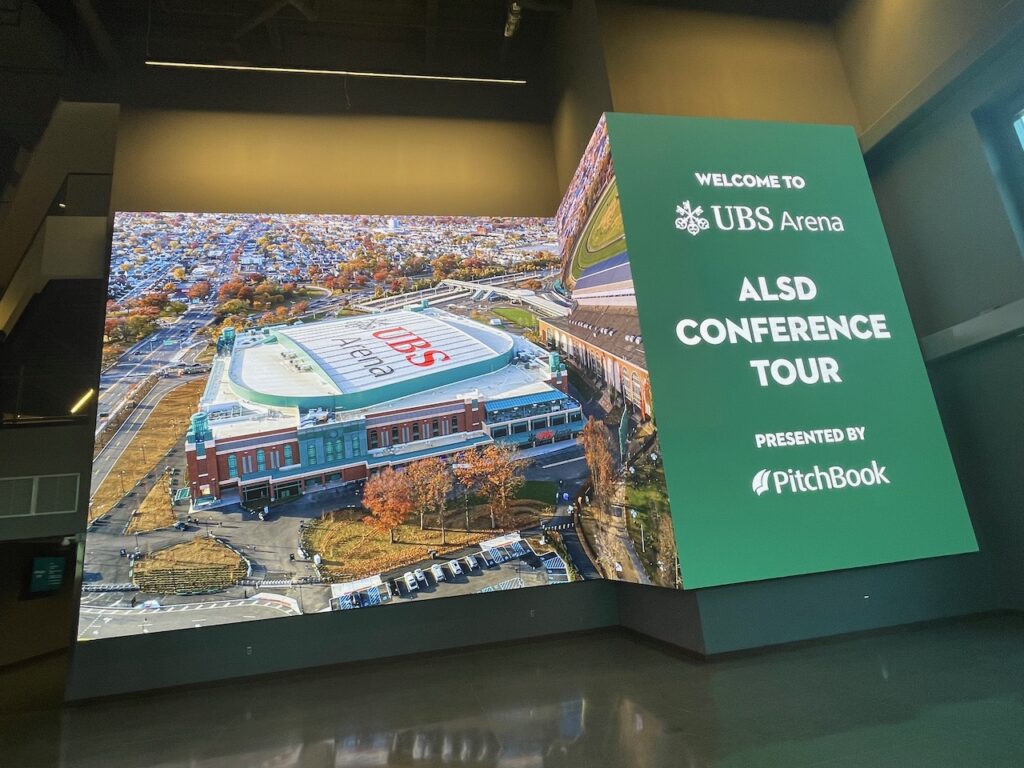
There were also a host of smaller technological tweaks that again, added up inside the overall strategy of using technology to improve the experience wherever possible. On the cutting-edge level were devices that used biometric eye scanning for secure entrance (like to the locker rooms) and a neat device in the performers’ “Green Room” spaces where entertainers and their crews could tap their mobile devices on a special receptor which would then share with them the back-of-house Wi-Fi password for the day — eliminating the need to post passwords on paper.
And though we didn’t have time to visit the team store, its size and breadth of shopping options are assisted by what Brown called an automatic bin system that can scan all the items a customer brings to checkout without a staffer having to ring up each item separately.
On a more understandable level the stadium had numerous device charging stations, in the concourses as well as in premium seating areas and even in restroom lounges — including a women’s restroom in the suite level that has now set the bar for size and comfort, as it comes complete with a lounge with a circular couch and individual seats with mirrors and charging outlets.

“The idea was to surprise and delight at as many touchpoints as we could,” said Brown, who noted that the issue of “not enough bathrooms” at the old Islanders’ stadium is now something far in the past.
But some good things from the past — like the Stanley Cup champion banners hanging from the ceiling — and a seating layout that keeps the roof low so top-level seats are positioned right above the ice are meant to make sure the new venue makes the longtime fans feel like they’re at a place they’d love to call their new home. “We want the fans to leave here talking about how wonderful the experience was,” Brown said. “And then to want to come back again.”
